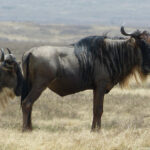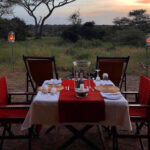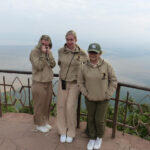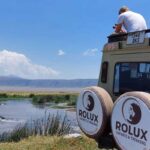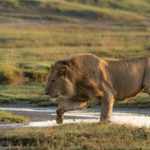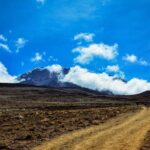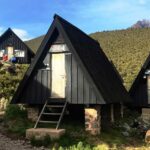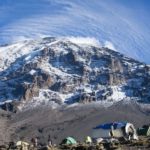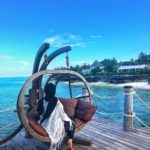When planning a safari in Tanzania, it’s crucial to weigh the options between the northern and southern circuits. The northern safari circuit, highlighted by the iconic Serengeti and Ngorongoro Crater, attracts travelers worldwide, eager to witness the Great Migration. Conversely, the southern circuit, which includes Selous Game Reserve and Ruaha National Park, offers a more secluded, intimate experience away from the throngs of tourists.
Both northern and southern Tanzania safaris have unique attributes that cater to different interests. The northern circuit provides breathtaking landscapes and dense wildlife populations, perfect for those seeking dramatic wildlife encounters. Meanwhile, the southern circuit presents vast, undisturbed wilderness areas, ideal for experts looking to immerse themselves in unfiltered nature. Understanding these distinctions is vital in ensuring your safari adventure meets your expectations and fulfills your needs.

Key Factors to Consider When Choosing Between Northern and Southern Tanzania Safaris
Choosing between northern and southern Tanzania safaris depends on various factors. One crucial aspect is the diversity of wildlife. The northern circuit is renowned for the Serengeti’s Great Migration, offering dramatic views of vast herds. Conversely, the southern circuit boasts undisturbed wildlife sanctuaries. Each area provides unique wildlife experiences tailored to different preferences.
Another vital factor is the landscape and scenery. Northern Tanzania features iconic landmarks like Mount Kilimanjaro and Ngorongoro Crater. These sites offer breathtaking natural beauty combined with rich history. Southern Tanzania, in contrast, has vast, remote wilderness areas like Selous Game Reserve. This region is perfect for those seeking solitude and pristine nature.
Visitor density also plays a significant role. Northern Tanzania can be crowded, especially during peak seasons. Visitors flock to popular sites for the chance to spot the Big Five. Southern Tanzania tends to be less crowded, providing a more peaceful safari experience. This makes it appealing for those looking to escape the hustle and bustle.
Practical considerations must not be overlooked. Accessibility and infrastructure vary between the regions. Northern Tanzania generally has more developed roads and accommodations. Southern Tanzania, while more remote, may require longer travel times and rugged transport. Weighing these factors can help you design an unforgettable safari with Rolux Safaris.
Wildlife Density and Diversity in the Regions
Wildlife density and diversity vary significantly between northern and southern Tanzania. Northern Tanzania, especially the Serengeti, boasts a high concentration of animals. The Great Migration sees millions of wildebeest and zebras on the move. This creates intense predator-prey interactions. Encounters with lions and cheetahs are common.
Southern Tanzania offers a different experience. It has vast, undisturbed habitats with fewer tourists. Here, you can find rare and diverse species in isolation. Regions like Selous Game Reserve house large populations of elephants and hippos. These areas provide a tranquil environment for avid wildlife watchers.
Both regions excel in different aspects. Northern Tanzania’s dense wildlife is ideal for those seeking spectacular sightings. Southern Tanzania’s diversity ensures a unique, serene safari. Spotting lesser-known species is more likely in the south. Visitors can enjoy a wider variety of wildlife in their natural habitats.
Choosing between these regions depends on personal preferences. If you prefer bustling wildlife scenes, the north is your go-to. For a more secluded and varied safari, southern Tanzania is perfect. Rolux Safaris offers tailored experiences in both areas. Plan according to the wildlife experiences you desire.
Comparative Analysis of Safari Experiences in Northern vs Southern Tanzania
Safari experiences in northern and southern Tanzania differ in several aspects. Northern Tanzania, known for its famous parks, provides classic safari adventures. The Serengeti delivers exciting wildlife action with the Great Migration. Ngorongoro Crater offers unparalleled views and dense wildlife sightings. These features make northern safaris highly popular.
Southern Tanzania safaris present a contrasting experience. The vast Selous Game Reserve and Ruaha National Park offer untouched beauty. Here, fewer tourists mean more serenity and intimacy with nature. Safari drives in the south reveal diverse landscapes and flora. These regions cater to those seeking peace and isolation.
Comparing these experiences highlights key differences. Northern Tanzania appeals to those looking for famous landmarks and bustling animal activity. Southern Tanzania suits travelers preferring less crowded, diversified environments. Both regions have unique offerings that cater to different safari styles. Your choice depends on the type of adventure you seek.
Safari accommodations also vary between the regions. Northern Tanzania has a wider range of lodges and camps. These cater to various budgets and preferences. Southern Tanzania tends towards exclusive, remote lodgings. Rolux Safaris ensures comfort and quality in both regions. Choose based on your desired experience and comfort level.
Practical Considerations for Travelers Opting for Northern or Southern Tanzania Safaris
When planning a safari, accessibility is a crucial factor. Northern Tanzania generally has better infrastructure. Roads and airports are well-developed, making travel easier. Popular spots like Serengeti and Ngorongoro Crater are easily reachable. This convenience attracts many travelers.
Southern Tanzania, on the other hand, is more remote. Accessing areas like Selous Game Reserve often requires longer travel times. You might need to take charter flights or endure rough road conditions. This can add to the adventure but requires more planning. Less accessibility means fewer visitors and a more peaceful experience.
Accommodation options vary between the regions. Northern Tanzania has numerous lodges and campsites. Choices range from budget-friendly to luxurious. Southern Tanzania offers more exclusive and secluded lodgings. Typically, these provide a unique and intimate safari experience.
Cost is another consideration. Northern safaris may come with higher expenses due to popularity. Prices can rise during peak seasons. Southern Tanzania might offer better value for money. However, the cost of charter flights can add up.
Weather patterns should be considered. Northern Tanzania experiences seasonal migrations. Timing your visit with migrations can enhance your safari experience. Southern Tanzania has less seasonal variation in wildlife sightings. Plan your trip according to weather and animal activity.
Safety and health precautions must not be overlooked. Northern Tanzania’s developed infrastructure means better access to health facilities. Southern Tanzania’s remote locations may pose challenges. Rolux Safaris is committed to ensuring your well-being. Always check travel advisories and health guidelines.


